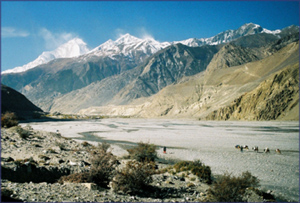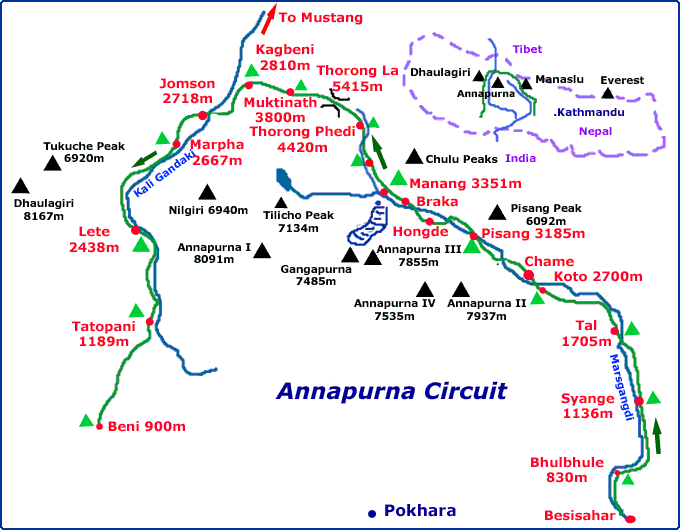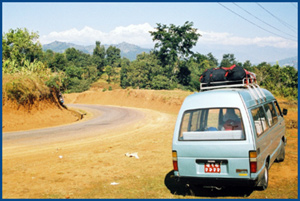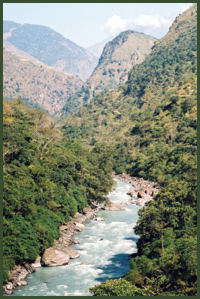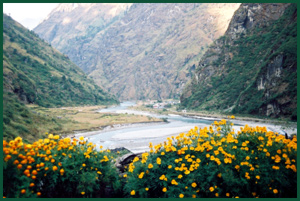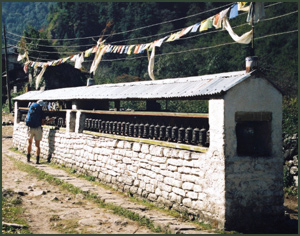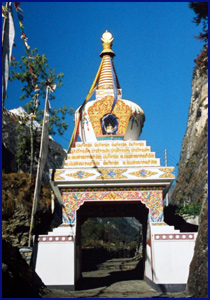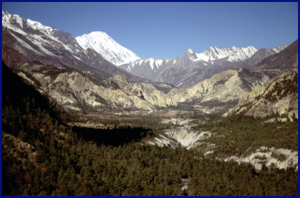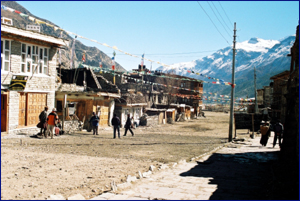The 125-mile circuit passes through
a variety of Himalayan environments, beginning in the lush Marsyangdi
Valley, home of Hindu farming families then entering the dry, arid region
of Manang inhabited by Buddhist Manangis with their Tibetan origins. Higher,
there are spectacular views of mountains such as Annapurna II (7937m),
Gangapurna (7485m) and Tilicho Peak (7134m). The crux of the trek is crossing
the Thorong La at 5414m where you enter a barren snowy world. There is
a long descent to the world's deepest gorge, the 'Kali Gandaki', which
splits the Dhaulagiri and Annapurna massifs towering 6000m above.
It is possible to do the trek self-supported,
staying in the numerous tea-houses along the route, but we chose to do
a 'full service' trek. Our guide, sherpas, kitchen staff and porters looked
after all our needs, even down to supplying hot water bottles for the
cold nights under canvas at higher altitudes! |
